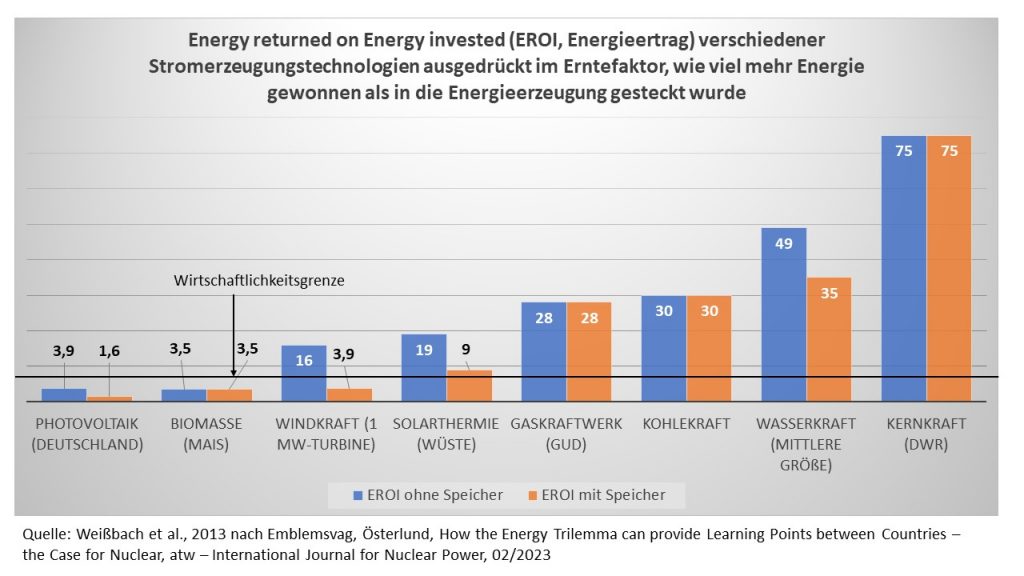Economics
Generating electricity with nuclear energy is economically advantageous. This applies despite the high level of investment required in new nuclear power plants, which - heavily dependent on financing conditions and costs - lead to plant-related electricity generation costs (so-called LCEO, Levelised Cost of Electricity) that are competitive with or cheaper than the corresponding full costs of fossil-fuelled power plants, but more expensive than the generation costs of wind power and photovoltaic systems, which have become cheaper over time.
However, an exclusively plant- and project-related analysis is incomplete, especially when comparing controllable electricity generators such as nuclear power plants, gas-fired and coal-fired power plants on the one hand and supply-dependent volatile generators such as wind power and photovoltaic systems on the other. Due to their technical nature, these lead to additional system costs that are not considered at system level for individual plants, i.e. are nevertheless incurred by the community of electricity customers and must be borne by the latter.
These costs can be broken down into the costs of the generation profile, connection costs to the electricity grid, additional grid control costs and grid expansion costs. The costs of the generation profile include the backup costs and reflect the specific nature of electricity generation with wind and solar power, which often generate a large amount - too much - or very little - too little - electricity in a large geographical area at the same time and thus either significantly reduce their own profitability and that of all other generation plants or, in the case of a high level of expansion, also have to be switched off to a significant extent, or lead to high price peaks due to a shortage of electricity.
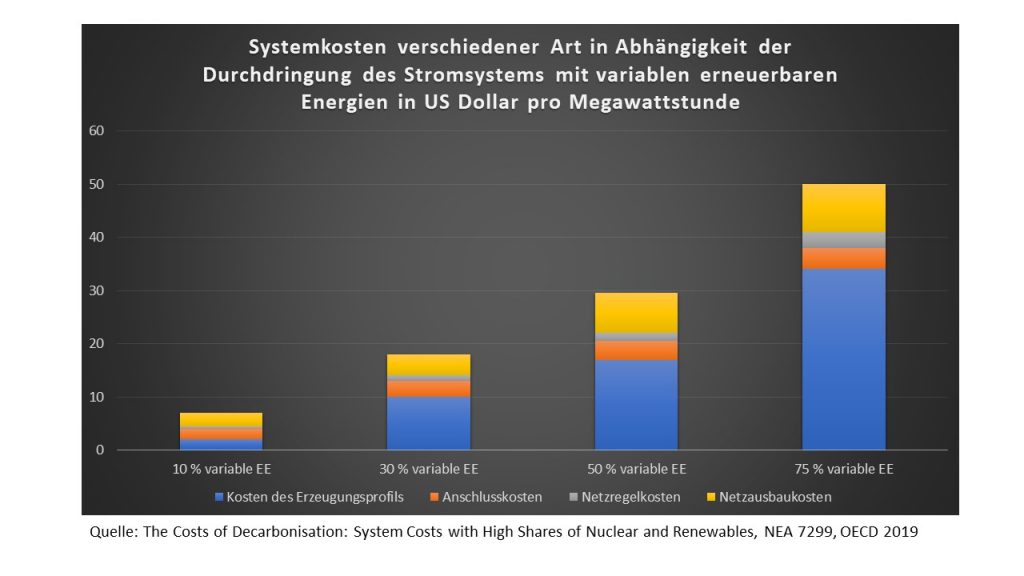
These system costs induced by variable or volatile renewable energies have the characteristic of increasing with increasing penetration of the generation market by these generation plants. The system costs therefore behave inversely to the plant-related costs, which have fallen for many years with the increasing expansion of renewable energies, at least until recently, due to industrial economies of scale. In the case of the total costs of electricity generation, the system-related costs also increase with high shares of variable renewable energies, as ever greater "overcapacities" have to be built up to cover an ever higher share of electricity generation in order to generate the required annual average quantities of electricity. This is related to the low utilisation of the plants (see menu item Security of supply). The connection costs and grid expansion must also be adapted to these very high installed capacities, with corresponding system cost effects.
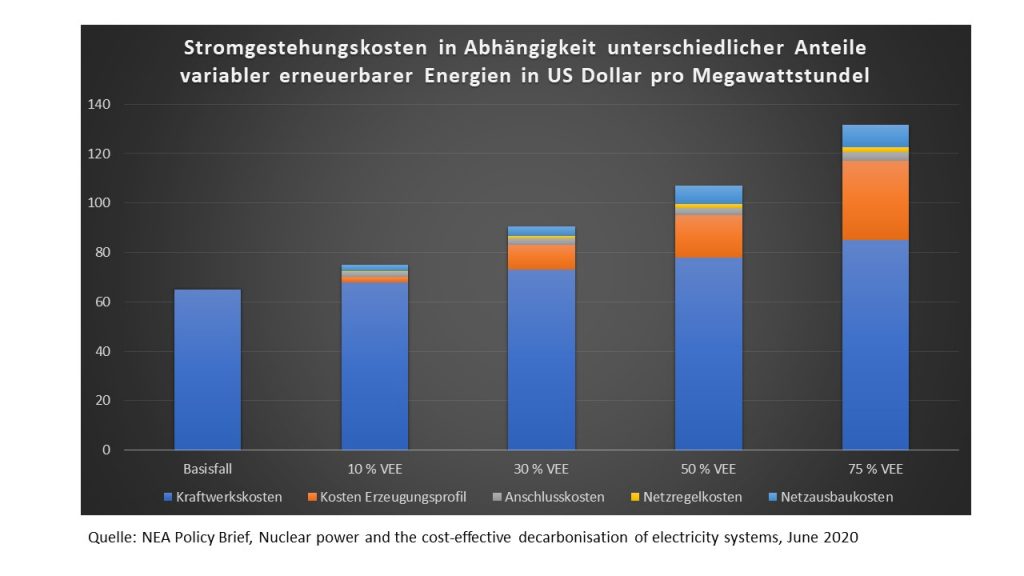
For the Netherlands, the costs of different types of generation, including the additional system costs to be allocated, were modelled using corresponding approaches by the consulting firm ENCO on behalf of the Dutch government. As part of the discussion there, these findings contributed to the decision to not only focus on the expansion of renewable energies in the upcoming decarbonisation of electricity generation, but also to expand nuclear energy.
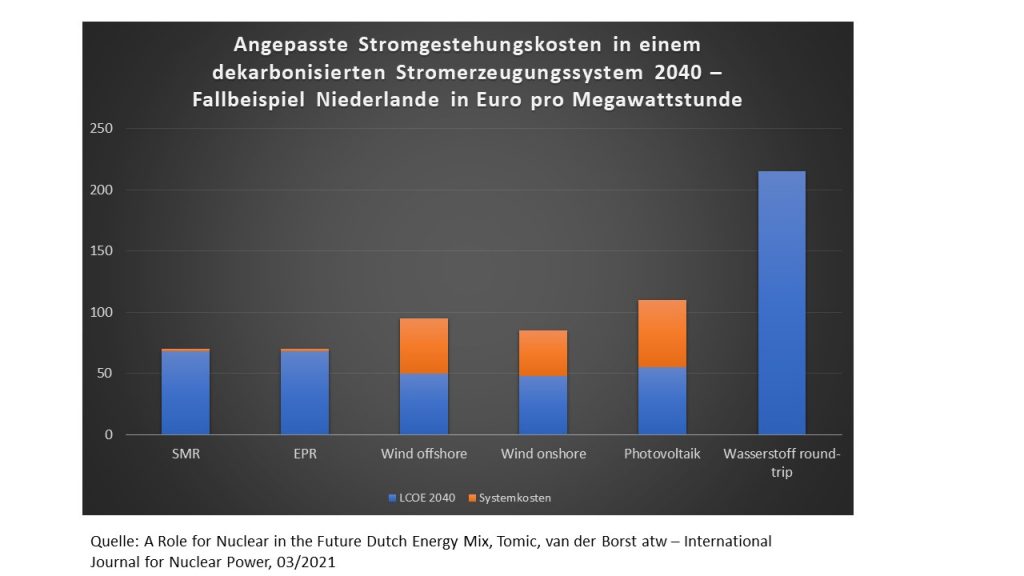
The newly proposed Levelised Full System Cost of Electricity (LFSCOE) model takes a different approach to illustrate the problem of plant-related versus system-related considerations. Here, the costs are analysed under the assumption that the individual generation types have to cover 100 percent or, to a lesser extent, 95 percent of electricity generation, i.e. the plants must ensure load coverage and system stability, possibly in conjunction with storage facilities. The figure below shows the results of this approach for the electricity grids in Germany and the US state of Texas, where a large amount of wind power and photovoltaics are also installed.
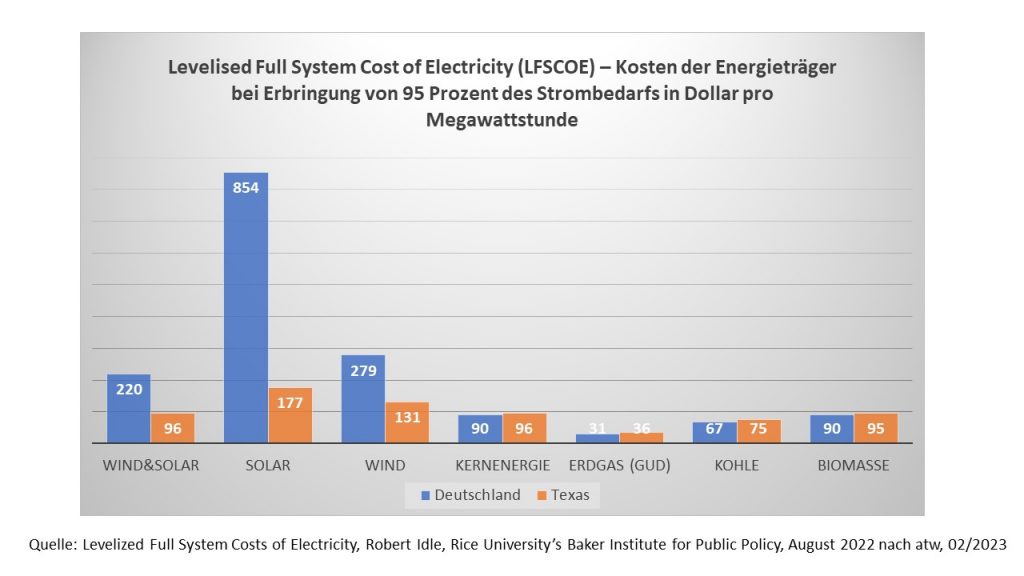
The so-called EROI value, which also plays a role in the aspect of specific resource consumption, i.e. in relation to the generated energy units (see menu item Conservation of resources), offers a completely different way of looking at types of power generation. This is the ratio of the energy that has to be invested in an energy generator to the yield of useful energy that can be drawn from it over its lifetime. As with resource requirements, the ability to stockpile fuel and the very low greenhouse gas emissions, the very high energy density of uranium in comparison to fossil fuels and even more so in comparison to the utilisation of ambient energies with low energy content benefits nuclear energy.
